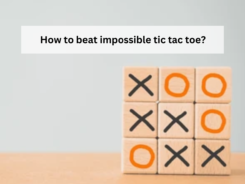We live in a selfie world; no doubt about it. It’s something that huge numbers of us do on an almost daily basis, and largely without much thought. For a little advice on the pitfalls in this area, you can click here for sending selfies and related information.
What about the issues that lurk behind the selfie craze, though? For some concerned people, the habit of repetitively uploading images of ourselves belies a much more sinister set of facts, many of which go unspoken. Perhaps it’s time to speak about them more openly.
The Paradox Effect
Much ink has been spilled on a certain paradox contained in the social media sphere. On the one hand, it affords apparently limitless connectivity between people from around the globe. On the other, youngsters seem to be more isolated than ever before.
This so-called “paradox effect” has seen an alarming rise in unhappiness among children and teenagers, particularly girls, over the last few years. A chief source of this seems to be coming from exactly how the social media landscape operates.
Instead of generating positive relationships with others, it appears that social media friendships are more likely to be comparative and competitive in nature. So, posting a selfie is not only intended as information but also as a status to be met.
Thus, what may seem like an innocent display of a particular day out at the beach, is actually more of a challenge. Rather than simply having fun at the beach, it’s to put out an image of something “hotter,” more “sexy,” or other terminology along those lines.
Loneliness and Despair
The numbers don’t make for comfortable reading. Young people seem to be trapped in rapidly rising rates of loneliness and despair. Surveys consistently report ever-rising figures in terms of self-reported loneliness and isolation.
Along with this, there are signs that young people are forming fewer intimate relationships in the real world. Choosing to focus on a more fantasy-based online social life, younger folks aren’t developing interpersonal skills in the same way either.
Herein lies the grim irony. While we take and upload ever more selfies that indicate how happy and fulfilled we are, we seem to be getting sadder and lonelier.
Rates of Depression
Anxiety and depression are clear frontrunners in mental illness statistics, and this is especially true of the West. Children in poorer countries naturally have less exposure to the social media landscape and also appear to have considerably lower illness rates.
Correlation is not causation, as we know, and yet one can’t help the nagging sense that social media is at least partly to blame. We commonly see young people with hundreds or even thousands of “friends,” yet nobody to genuinely confide in.
This is a serious problem, according to concerned parents and psychologists alike. Just a few decades ago, genuine depression was practically unheard of among the very young. Now, it’s worryingly widespread in even pre-teen kids.
Depression and anxiety are the mine-canaries of the mental health world and are often indicative of a wider trend in mental illness. This strongly implies that we are only seeing the tip of the lance at present, and there may be worse to follow.
Even the S-Word
The issue of self-esteem has become somewhat warped. Studies have repeatedly shown that the social media landscape is involved in exacerbating self-esteem problems for kids. When kids develop these problems, they can go in several directions.
As noted above, one of the primary directions this issue goes is depression. Young people will often develop even clinical levels of depression as a response to the lack of a stable self-concept.
Another direction is narcissism. Alongside the heightening incidence of depression, there’s a concomitant rise in narcissistic traits among teens being observed. While these rates are not yet fully understood, there’s every indication that social media plays a role.
Finally, and most troublingly of all, is the escalating trend in suicidality. Again, the causes are not well understood, but the strong signals are there that it’s linked to how young people are interacting.
Some Final Thoughts
The selfie culture is the happy-seeming tip of a somewhat grimmer iceberg. It appears that there’s an inverse relationship between the posed happiness of the images and the underlying reality.
Human psychology evolved to cope with a specific type of context in which friendships were few and deep. Younger folks today have vast numbers of so-called “friends,” but almost exclusively of the very most superficial kind.
What the statistics seem to be telling us is that we need to find a way of softening the effects of this on developing minds. While we clearly don’t understand it well enough yet, all the signs are that it’s a real problem going forward.

















































































